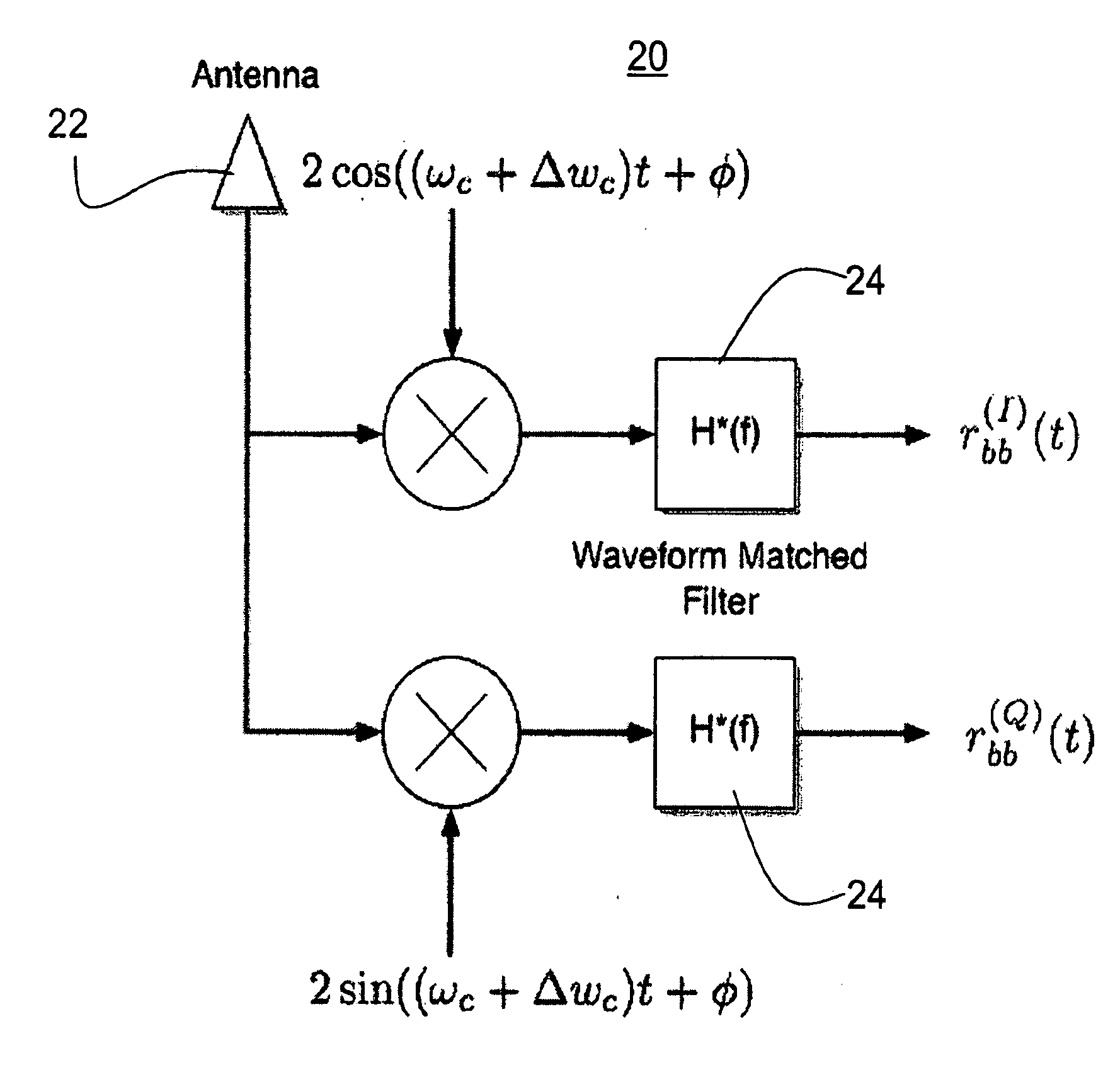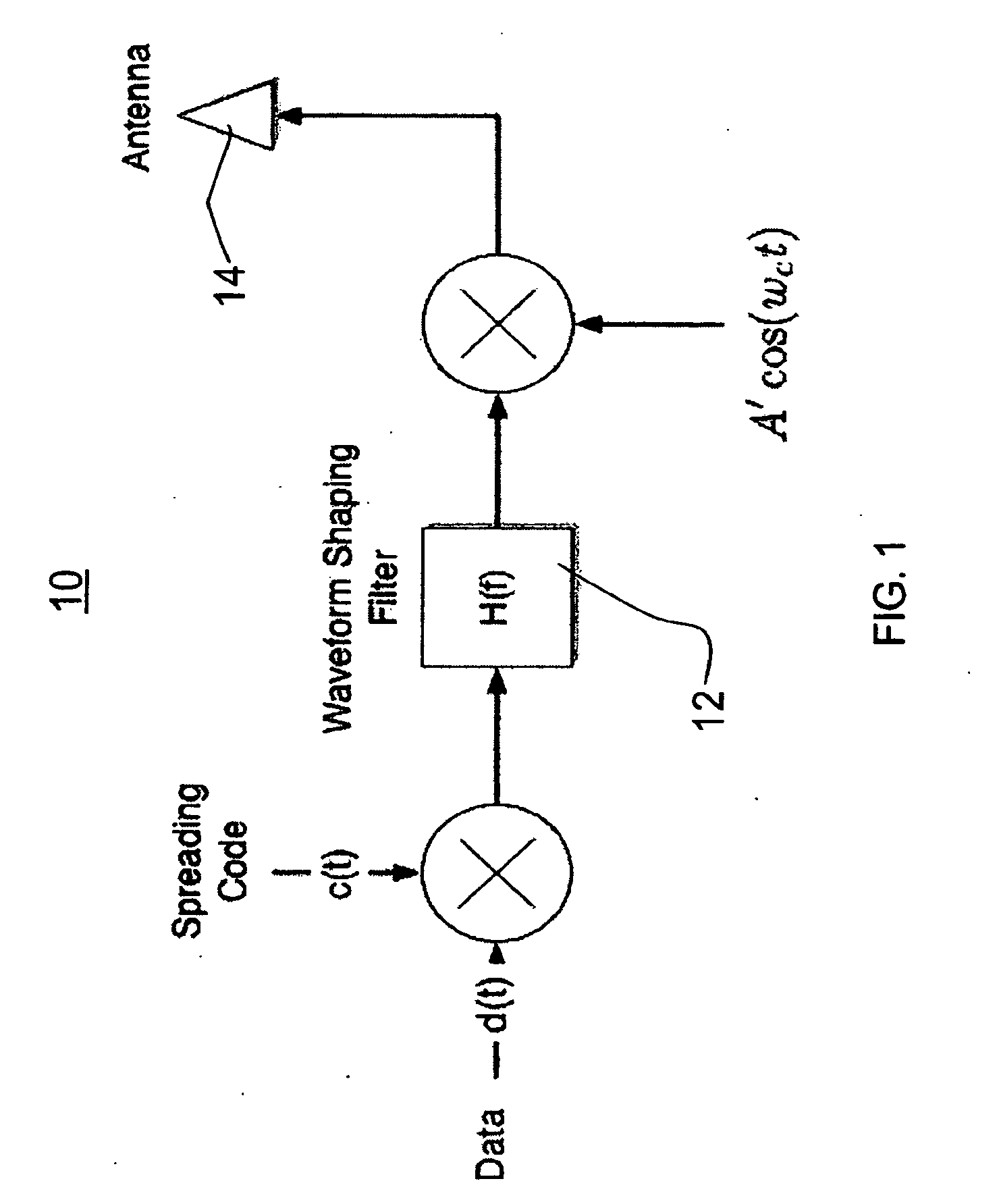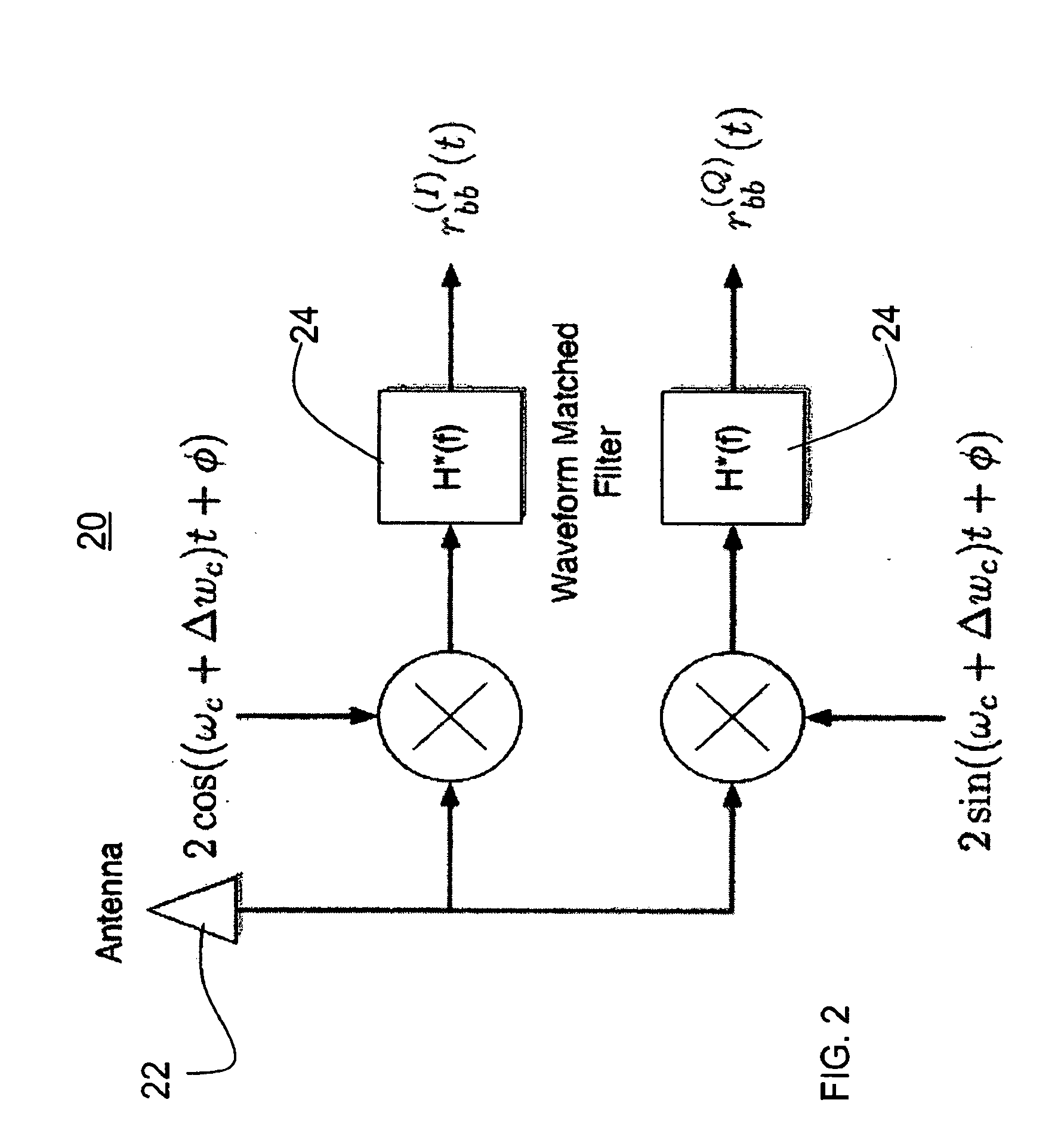Spread-spectrum receiver and reception method
a receiver and spectrum technology, applied in the direction of transmission, electrical equipment, etc., can solve the problems of increasing data rates, increasing difficulty, and significant interference in wireless data communications
- Summary
- Abstract
- Description
- Claims
- Application Information
AI Technical Summary
Benefits of technology
Problems solved by technology
Method used
Image
Examples
Embodiment Construction
[0019]The invention provides a receiver and reception method that enable packet detection at low (e.g., <0 dB) signal-to-noise ratios without the use of external synchronization (i.e., asynchronous) with a receiver that has memory and power sufficient to analyze a signal stream substantially longer than a single bit. Unlike typical conventional receivers, which try to synchronize onto a noisy signal looking at the bit-stream bit-by-bit (so-called “latching”), receivers and reception methods of the invention look at multiple bits, and preferably a substantial portion of a signal stream, containing many bits, to determine how to latch to the signal. More power and memory is required at the receiver end, but latching onto significantly noisy (relative to the signal) signals is possible.
[0020]A preferred embodiment receiver and reception method of the invention provides a fully parallel VLSI implementation for code acquisition at low SINR. The implementation is based on the well-known p...
PUM
 Login to View More
Login to View More Abstract
Description
Claims
Application Information
 Login to View More
Login to View More - R&D
- Intellectual Property
- Life Sciences
- Materials
- Tech Scout
- Unparalleled Data Quality
- Higher Quality Content
- 60% Fewer Hallucinations
Browse by: Latest US Patents, China's latest patents, Technical Efficacy Thesaurus, Application Domain, Technology Topic, Popular Technical Reports.
© 2025 PatSnap. All rights reserved.Legal|Privacy policy|Modern Slavery Act Transparency Statement|Sitemap|About US| Contact US: help@patsnap.com



